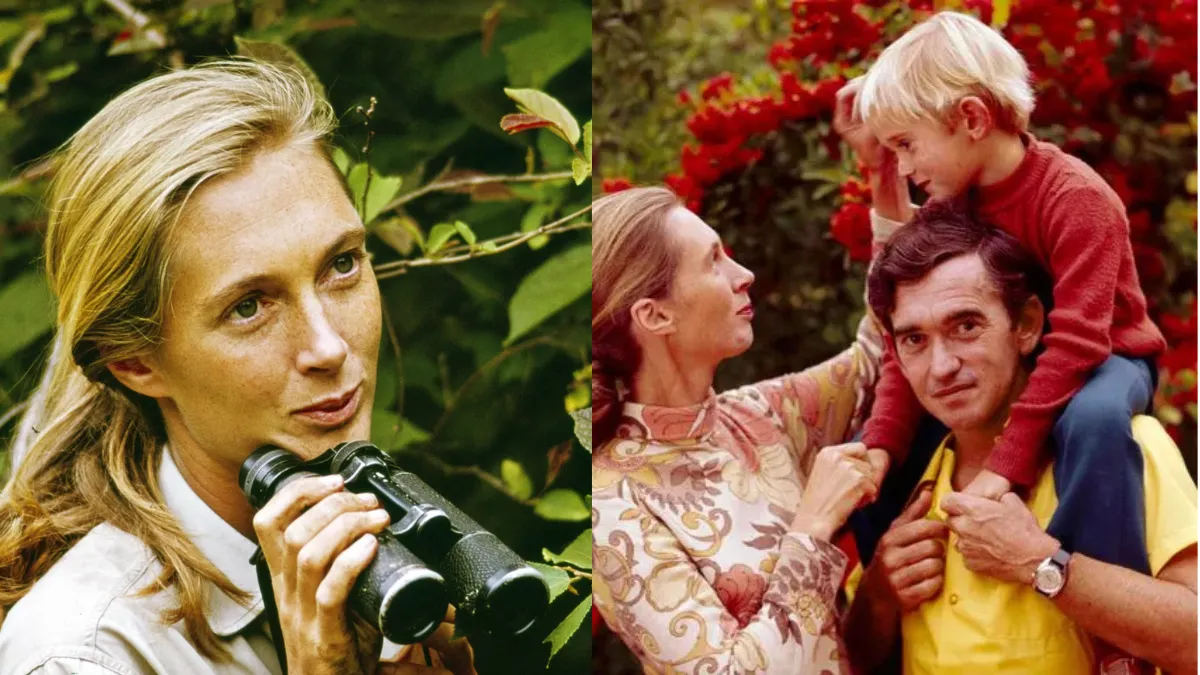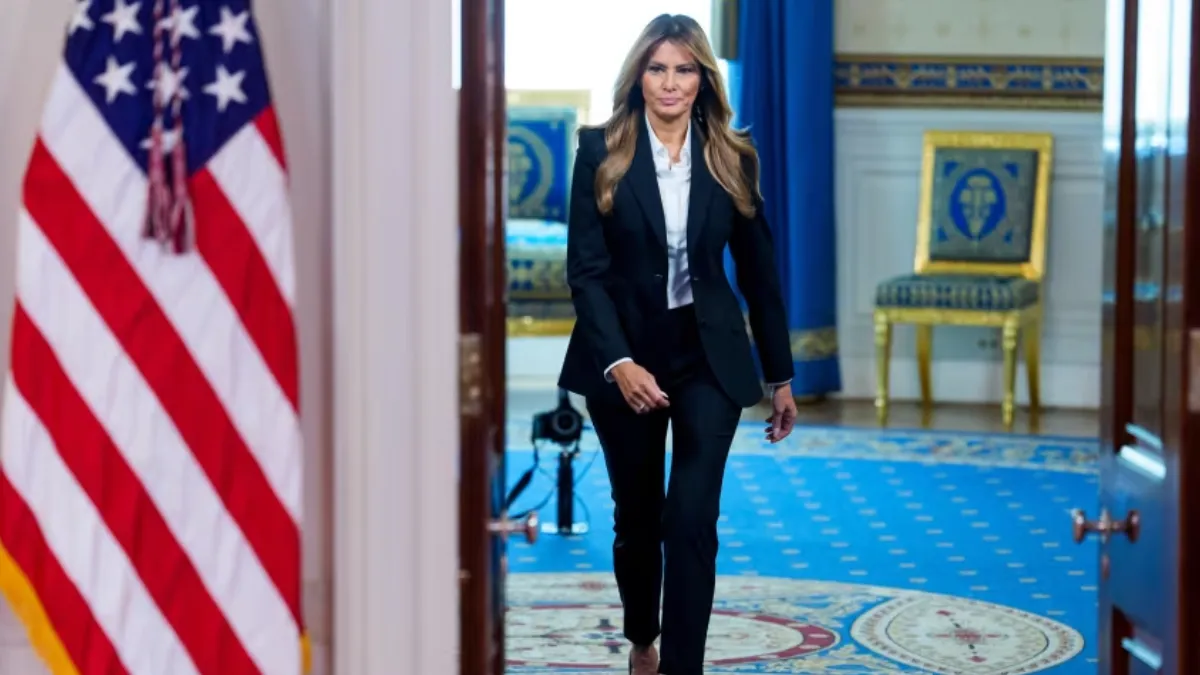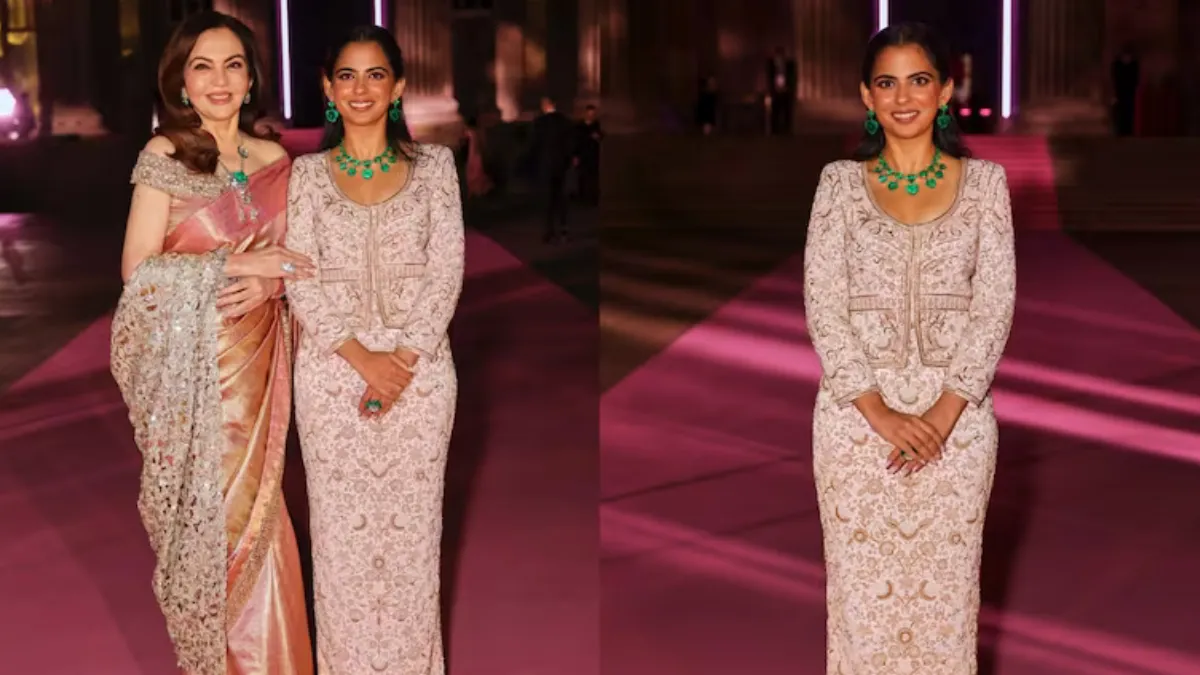Jane Goodall, the legendary primatologist, ethologist, and conservationist, has passed away at the age of 91 while on a speaking tour in California. According to an official statement released by the Jane Goodall Institute on October 1, she died of natural causes. Her passing marks the end of an extraordinary era in the study of chimpanzees and environmental activism. Goodall is survived by her son Hugo and three grandchildren.
The institute described her as a pioneer who “revolutionized science and dedicated her life as a tireless advocate for the protection and restoration of our natural world.” For more than six decades, Jane Goodall transformed how humanity sees animals, the environment, and our shared connection with the planet.
A Life Dedicated to Chimpanzees and Science
Born in 1934 in London to engineer Mortimer Morris-Goodall and writer Margaret Joseph (who wrote under the pen name Vanne Morris-Goodall), Jane developed a fascination with animals at an early age. She often recalled that her love for nature began in childhood, nurtured by her mother’s encouragement. At just 10 years old, she began dreaming of Africa. Unlike most young women of her time, Goodall wanted to live among wild animals, study them, and write books about her discoveries.
In 1957, Goodall moved to Kenya, where she worked as a secretary before meeting the renowned anthropologist and paleontologist Louis Leakey. Impressed by her passion and observational skills, Leakey arranged for her to study primate behavior. In 1960, at the age of 26, she traveled to Tanzania’s Gombe Stream National Park to begin what would become her life’s work: the long-term study of chimpanzees in the wild.
Her mother accompanied her on that journey because authorities at the time would not allow a young woman to live alone in the region. Jane often credited her mother as the “brave one” for enduring snakes, baboons, and the hardships of camp life while Jane pursued her dream.
Groundbreaking Discoveries in Gombe
Jane Goodall’s early years in Gombe were filled with challenges, but they soon led to scientific breakthroughs that changed the world. In October 1960, while observing a chimp she named David Greybeard, she noticed him stripping leaves off a twig to use as a tool for fishing termites out of a mound. This was a revolutionary moment: until then, science insisted that only humans were capable of making and using tools.
This single observation forced scientists to rethink the very definition of humanity. Goodall’s research documented not only tool use but also the emotional depth and complex social structures of chimpanzees. She showed the world that chimps express joy, sadness, grief, and even a sense of humor. They kiss, hug, comfort each other, and engage in both tender and aggressive behavior—mirroring aspects of human society.
By the mid-1960s, her work had attracted global attention. National Geographic sent filmmaker Hugo van Lawick to document her life with the chimps. The two later married in 1964 and had a son, Hugo Eric Louis, before divorcing after a decade. Despite personal challenges, Jane’s work continued to flourish, and she earned her Ph.D. in ethology from Cambridge University in 1966 without ever having completed a bachelor’s degree.
Also read: Trump Tariffs Movies: What It Means for Hollywood and Global Film Industry
Beyond Science: An Advocate for the Planet
While Goodall became the world’s most famous expert on chimpanzees, her mission soon extended beyond science. By the 1980s, she was alarmed by deforestation, poaching, and the exploitation of chimps for circuses and medical research. In 1986, she left Gombe to dedicate her life to conservation and advocacy.
Her visits to research laboratories were especially traumatic. She described seeing chimps locked in five-foot cages, subjected to painful experiments. Instead of condemning the scientists, she sought collaboration, ultimately working with institutions like the U.S. National Institutes of Health to retire hundreds of chimpanzees to sanctuaries. In 2015, the NIH officially ended its chimp research program—a milestone achievement that Goodall celebrated, though she lamented how long it had taken.
Global Recognition and Honors
Jane Goodall’s influence reached far beyond academia. In 1977, she founded the Jane Goodall Institute, a global nonprofit dedicated to wildlife research, conservation, and community-centered environmental work. In 1991, she launched the Roots & Shoots program, inspiring millions of young people in over 60 countries to take action for animals, people, and the environment.
In recognition of her tireless efforts, Goodall was named a UN Messenger of Peace in 2002. Over her lifetime, she received numerous awards, including the Kyoto Prize, the Templeton Prize, and the French Legion of Honor. Her voice carried immense weight in global conversations about climate change, biodiversity, and sustainability.
Goodall’s admirers included celebrities such as Prince Harry, Leonardo DiCaprio, and Angelina Jolie, all of whom supported her mission to protect the planet. Despite fame, she remained deeply humble, often reminding people that her life’s purpose was to be “a voice for those who cannot speak for themselves.”
Also read: Donald J. Trump Returns to the White House: A New Era for America
Personal Life and Resilience
Jane Goodall’s personal journey was as inspiring as her professional achievements. After her divorce from Hugo van Lawick, she married Tanzanian parks director Derek Bryceson in 1975. Tragically, Bryceson died just five years later. Though she never remarried, Goodall often said her life was full, complete with her work, her son, and a circle of friends around the globe.
She remained connected to her childhood toy chimpanzee, Jubilee, which her father had given her as a child. She kept it throughout her life as a symbol of her enduring love for animals.
A Voice Against Climate Change
In recent decades, Goodall became one of the most passionate voices addressing the climate crisis. She frequently urged governments, corporations, and individuals to take urgent action.
“We must confront the climate crisis,” she said in 2020. “Around the world, people are waking up, and they’re ready for change. I have hope, but only if we work together.”
Her book, The Book of Hope: A Survival Guide for Trying Times (2021), reflected her optimism even in the face of overwhelming global challenges. She believed that humanity’s capacity for resilience, innovation, and compassion could still save the planet—if people chose to act.
Legacy of Inspiration
Jane Goodall’s impact is immeasurable. She not only redefined science’s understanding of chimpanzees but also reshaped how humans see themselves in relation to the natural world. She taught us that we are not separate from animals but part of an interconnected web of life.
Her Roots & Shoots program continues to inspire young activists, proving her belief that the next generation holds the key to a sustainable future. Her institute remains a leading force in conservation, education, and advocacy.
Also read: US Shutdown Begins: Government Services Halt as Funding Bill Fails in Senate
Quick Facts About Jane Goodall
| Aspect | Details |
|---|---|
| Full Name | Dame Jane Morris Goodall |
| Born | April 3, 1934, London, England |
| Died | October 1, 2025, California, USA |
| Age | 91 |
| Field | Primatology, Ethology, Conservation |
| Famous For | Groundbreaking research on chimpanzees in Gombe Stream National Park |
| Key Discoveries | Tool use by chimpanzees, emotional and social complexity |
| Major Organizations | Jane Goodall Institute (1977), Roots & Shoots (1991) |
| Honors | UN Messenger of Peace (2002), numerous global awards |
| Books | In the Shadow of Man, Reason for Hope, The Book of Hope, among others |
Also read: TrumpRx: Trump Launches Discount Drug Website with Pfizer Deal to Lower Prices
Conclusion: The End of an Era
The death of Jane Goodall is not just the loss of a pioneering scientist but also the loss of a voice of compassion, hope, and relentless advocacy for nature. Her journey—from a young girl dreaming of Africa to becoming the most respected voice for chimpanzees and the environment—remains one of the most inspiring stories of the 20th and 21st centuries.
Even in her final years, she never slowed down, traveling across the world to speak, inspire, and demand urgent action against climate change. Her message was simple yet profound: humans must learn to live in harmony with animals and the environment.
As tributes pour in from across the globe, one thing is certain: the world is better because Jane Goodall lived in it. Her work, her institute, and her spirit will continue to guide generations toward a more compassionate and sustainable future.
















